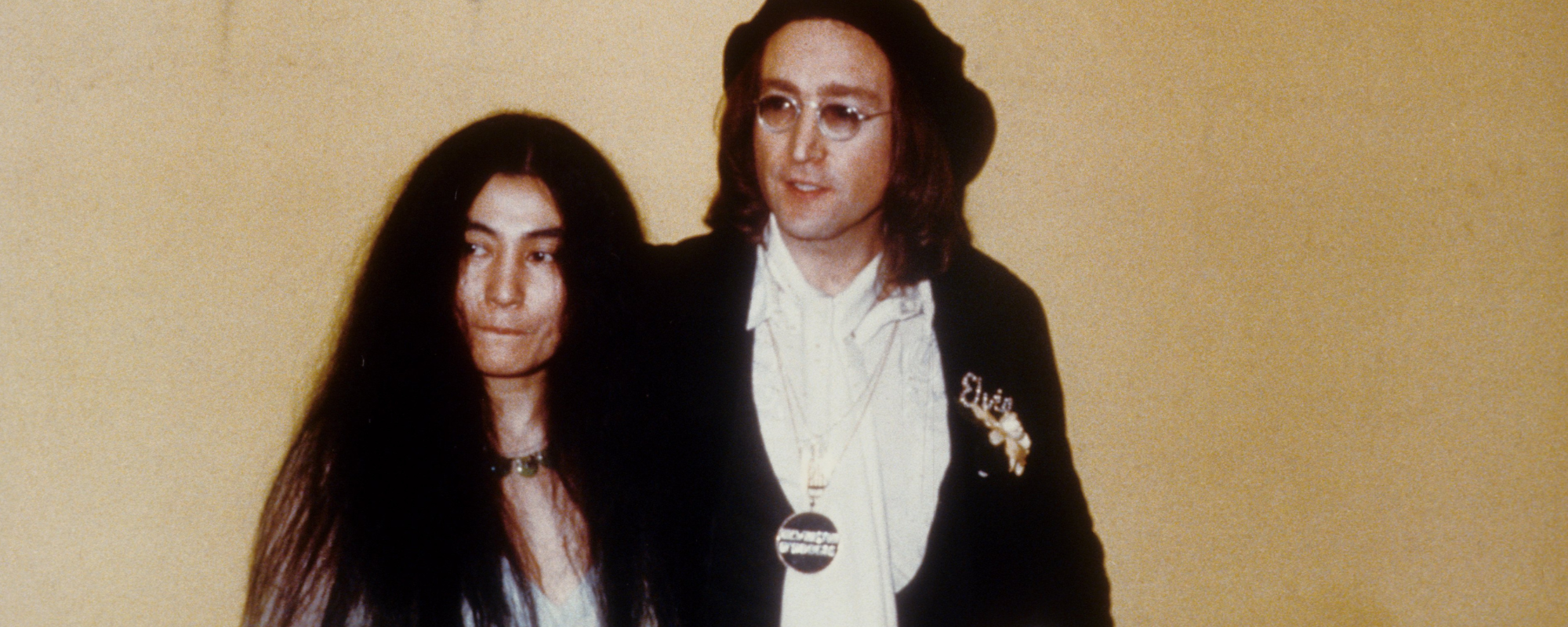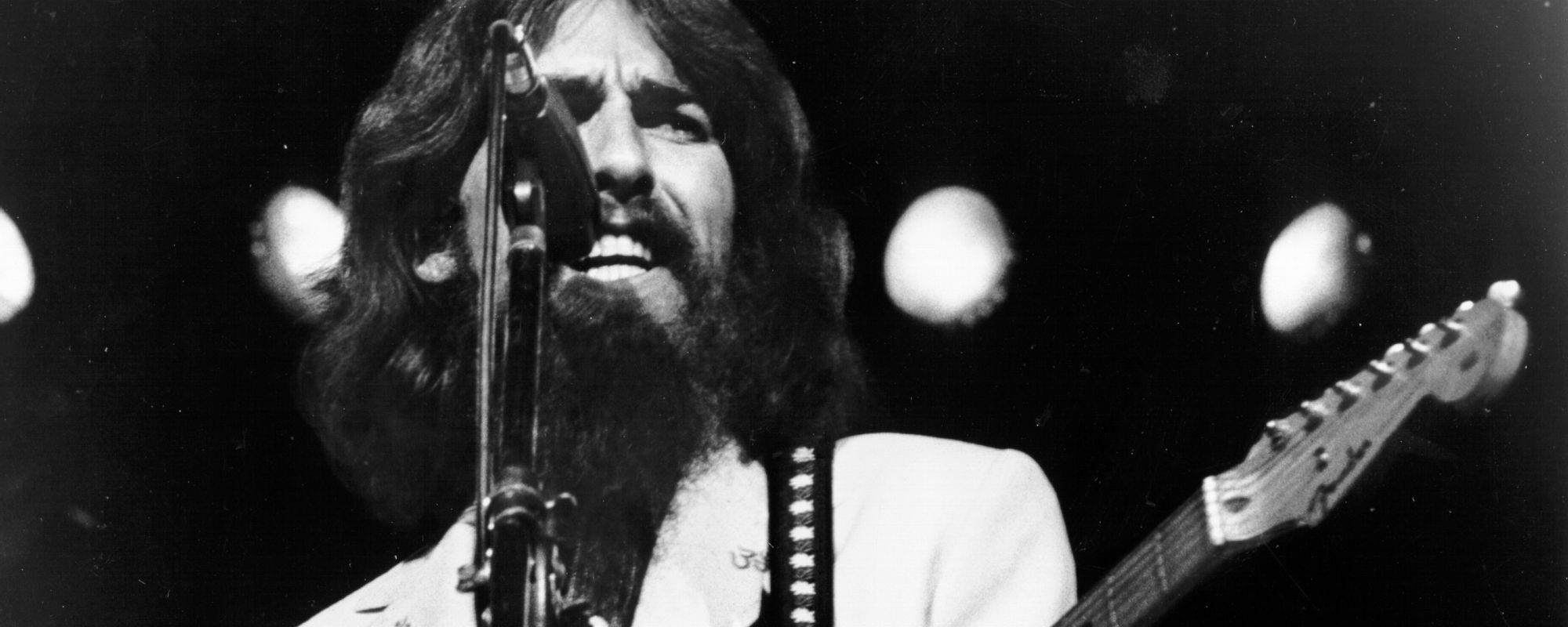When Canadian progressive music icons Saga made an international splash in 1981 with their fourth album Worlds Apart, they crafted a very distinct sound. Taking the songwriting complexity and musical chops of prog rock, and combining them with the accessibility and hooks of mainstream rock without sounding pop, they crafted a sound and approach that was invigorating and fresh. Over 47 years they have created a catalog of 22 studio albums that is distinctly their own. While Worlds Apart remains the band’s commercial high-water mark, they have released equally great work since then and retained a strong following throughout Europe (particularly Germany).
Videos by American Songwriter
The classic lineup of frontman Michael Sadler, guitarist Ian Crichton, bassist Jim Crichton, keyboardist Jim Gilmour, and drummer Steve Negus dominated most of the years 1977 through 2003. Negus retired in 2003 and Jim Crichton in 2017, but the group soldiers on with bassist Dusty Chesterfield and drummer Mike Thorne. They have recently been touring and are planning some rare American dates for later this year.
Creating a list of Saga deep cuts is a daunting challenge given how many albums they have, but this is a start. The Canadian band is truly one of the most underrated in rock history. True fans, of course, have embraced their musical richness for decades.
“It’s Time (Chapter 3),” from Images at Twilight (1979)
Saga pulled off an unusual achievement by creating a concept album featuring 16 chapters—the first half on their first four albums, the latter half on albums released between 1999 and 2003, and then uniting them on 2005’s The Chapters Live. The story involves, among other things, Einstein’s brain and extraterrestrial observation of mankind. In an unusual move, Saga recorded the songs on different albums and out of order. For example, Chapters Four and Six were on their debut album, and this one emerged on their second. “It’s Time” is an upbeat, vibrant song with a very ‘70s sound—by their fourth album, their international breakthrough Worlds Apart, the group adjusted to the musical vibes of the times but also started solidifying the classic Saga sound. But their early albums still have plenty of great tunes to recommend, including this track.
“Intermission,” from Heads or Tales (1983)
This dreamy, melancholy work is an unusual sonic tapestry in the Saga catalog, an ambient rock track with Sadler ruminating how one can pass through life and end up in a place they might not have expected. Time is a theme that factors into many of his lyrics, and here they are very effective.
See the man
Watch another man
See their lives
Dissolve into one
See the boy in his eyes
Remember other times
I fall inside
Reflecting eyes
Dissolve in time
The same man
Doesn’t try to understand
How the time
Slipped through his hands
It’s so hard to see
Through those failing eyes
This is one of those contemplative tunes perfect for listening to submerged beneath headphones late at night.
“Misbehaviour,” from Behaviour (1985)
By the mid-1980s, Saga flirted with more commercial sounds to balance out the progressive tracks that made them famous. And likely at the behest of their label who wanted another hit album on par with Worlds Apart. While this was the second single released from the Behaviour album, it did not get the same attention as the first single, the R&B-inflected ballad “What Do I Know,” which had vocal support from Sheila Benson. “Misbehaviour” is an upbeat anthem for a passionately amorous night—very ‘80s in its vibe. While being more radio-friendly, it still had the signature Saga stamp that fits in well with their oeuvre, even if the album ruffled some fan feathers at the time.
“Shape,” from The Beginner’s Guide to Throwing Shapes (1989)
Ian Crichton’s special staccato style of guitar playing works really well in this energetic rocker dealing with identity and emotional shifts. This song exemplifies why Saga produced so much good music—while Crichton ripped it up across the frets in the choruses, he let Gilmour’s keyboards dominate more during the verses. It’s a classic hard-rocking track with a catchy chorus that stays ingrained in your brain.
I’m startin’ to feel
A bit like Frankenstein
‘Cause I know how it feels to wake up
And be some other guy
Every little movement
I’m forced to modify
I know everyone does it
So I won’t apologize
“Why Not,” from Steel Umbrellas (1994)
This energetic track features some funky guitar licks, hand percussion, and tight grooves that make for a nice contrast to other Saga works. Actually, much of the album has a more pop influence, and it turns out that many of these tunes were created for the short-lived Michael Dudikoff action series Cobra in 1993. While the theme song (“Somebody’s Out There”) was used in the American show, most of the songs were not and ended up compiled on Steel Umbrellas, which explains why the album’s overall tone is different. This makes for a cohesive Saga release of a different flavor that enriches their catalog with memorable tracks like “Shake That Tree” and “Push It.”
“Screw ‘Em,” from Generation 13 (1995)
If you wanted to know what Saga sounded like closer to metal mode, this is one of the heaviest tracks in their canon, as are a couple of others on Generation 13. (The album title refers to Gen X, reportedly the 13th in American history.) “Screw ‘Em” takes place from the point of view of a cynical manipulator.
Rule #1 Is to gain their confidence
Rule #2 Make them sign the check
Rule #3 Look out for #1
Rule #4 Take the money and run, don’t look back
“Screw ‘Em”
This song is part of an ambitious concept album spearheaded by bassist Jim Crichton and inspired by the book 13th Gen: Abort, Retry, Ignore, Fail? by Neil Howe and William Strauss. The album traverses different musical styles and offers a critique of the darker side of Gen X. This track—with its pummeling tom toms, driving riffs, and subtle time signature shifts—is certainly a standout on this album and generally different than what you often hear Saga come up with. Crichton interlinked 25 short- to regular-length tracks rather than the prog cliché of writing epic songs. The approach keeps things moving at a good pace.
“Always There,” from House of Cards (2001)
This was never an official singles release, and looking back it feels like a missed opportunity for their label to grab Saga some mainstream radio airplay. “Always There” wasn’t designed for that purpose—t’s just a very simple, heartfelt song about someone expressing their love and admiration for a partner who has been with him through thick and thin. When the band redid the song in 2021 with banjo on Symmetry, they collected a group of fan-submitted clips to create a video. While this isn’t as deep of a cut as some of the other tracks here, it still has to be singled out because it is probably the most beautiful song Saga ever recorded. And it’s one in which Michael Sadler’s performance truly represents the voice of experience that could not have been replicated during the band’s earlier days.
“Trust,” from Trust (2006)
This hard-rocking song has the bellowed word “trust” punctuating the verses and emphasizing the song’s theme of pondering who is worthy of the titular concept. Like “Screw ‘Em,” this one’s got a harder sound although closer to a classic prog metal vibe here. Throughout the 2000s, the Canadian rockers have continued to mine their signature sound and create memorable tracks at a time when many of their contemporaries burned out on making new material. It’s impressive.
When you purchase through links on our site, we may earn an affiliate commission.
Photo courtesy Saga via Facebook












Leave a Reply
Only members can comment. Become a member. Already a member? Log in.